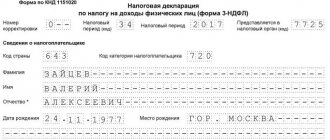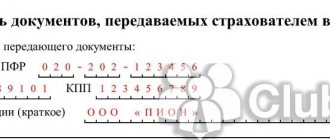The essence and purpose of the document
In the activities of any subject, there is an innumerable variety of different forms, types, forms of papers, without which the implementation of this very activity is not possible.
All this documentation has to be stored, and for quite a long time. The safety of papers in most cases is entrusted to a special structural department of the enterprise - the archive. Moreover, transferring forms and forms to the archives department for safekeeping is a whole ritual, which must also be documented with the appropriate documents.
The main form that is drawn up when accepting and transmitting papers is an inventory. A special form of the list, which names all types of documents transferred from one department to another or from one official to another. The key purpose is to organize order in the recording of documentation and ensure prompt search for the necessary information.
How to store fund sheets
The fund sheets represent a catalog of the files of all organizations stored in this archive. These sheets cannot be filed. They are stored in a folder. A certification inscription is drawn up for the folder, which contains:
- folder number;
- number of documents stored in the folder;
- document numbers (from... to...), which are identical to the numbering of funds;
- an indication of the presence of continuations for individual sheets (sheet fund No.... has a continuation on... sheets).
If the composition of the funds changes, the inscription is drawn up anew. The old one does not go anywhere and is stored there permanently. The sheets of the fund themselves are also stored in the archive permanently, until the files of the fund of their archive leave.
Zen! Zen! Zen! Our Yandex Zen channel has even more special legal materials in a convenient and beautiful format. Subscribe now →
Applicable forms
Depending on the situation, the responsible employee will have to fill out a special form. There are several of them. Thus, Order of the Ministry of Culture of Russia dated March 31, 2015 No. 526 approved the following forms of lists of cases (ML):
- permanent storage (Appendix 14);
- on personnel (Appendix 15);
- temporary (over 10 years) storage periods (Appendix 16);
- electronic documents for permanent storage (Appendix 17);
- electronic documents with temporary (over 10 years) storage periods (Appendix 18);
- structural unit (Appendix 23);
- electronic documents of the structural unit (Appendix 24).
The key requirements for filling out these types are set out in section 3.7 of the Basic Rules for the Operation of Archives of Organizations, approved by the decision of the Board of Rosarkhiv dated 02/06/2002.
Such a document is not just a folder with scattered tables and files. The form has its own individual structure:
- Title page.
- Content.
- Preface.
- List of abbreviations.
- Pointers.
Moreover, for each type they have unified forms that differ from each other. Let's look at the features of compilation and sample documentation samples.
Obligation to keep documents
The main document defining the storage periods for documentation is the Standard List approved by Rosarkhiv. By Order of Rosarkhiv No. 236 dated December 20, 2019, this List was updated, and from February 2021, organizations compiling archives must be guided by it.
For private organizations, the requirements of Rosarkhiv are not mandatory, however, Art. 50 of the Federal Law of 02/08/1998 No. 14-FZ “On LLC” provides for the obligation of Companies to store documents on their activities and present them upon request to members of the company.
Inventory of permanent storage files
Such a list can be compiled in relation to securities that have a “Permanent” storage status. Inventory of permanent storage cases, sample filling differs from other forms in its structure. In the tabular part of the form there is no column “Storage period”, since it makes no sense to indicate this period.
Prepare a preface to the inventory of permanent storage cases; the sample should contain information about the main areas of activity, as well as information about the structure of the enterprise for the period of compilation of the form. Additionally, the precondition provides a brief description of the fund documentation included in this section. If there are cases that go beyond the boundaries of the period, they should also be listed in a separate order. You can also indicate in the preface whether this archival inventory contains additional information.
The preface must be signed by the responsible author. Moreover, you should not only sign, but also indicate the position of the compiler, full name, and date of registration. In addition to the compiler, the preface to the inventory of permanent storage files (example below) is signed by the head of the archive department or another responsible person (for example, the head of the archive).
About shelf life
The paperwork of any organization is a continuous process of creating various types of documents: personal files, local regulations, accounting documents, etc. All documents of the organization must be systematized taking into account the determination of their value, on the basis of which the storage period of documents is determined.
The main storage periods for documents are as follows:
- permanent shelf life. These are the most important documents that have historical or cultural significance, social significance, and economic or other value, both generally and for a specific organization. These include constituent documents, orders for core activities, etc.;
- long shelf life (over 10 years). These are some documents on labor protection, job descriptions, personal files of employees;
- temporary storage period. Documents belonging to this group are destroyed within the first 10 years after the completion of paperwork on them.
State or municipal organizations are required to submit their documents to the city archive, since they complete it. For commercial organizations, such an obligation is not provided, and they monitor the safety of their documents themselves.
Inventory of personal matters
Personnel records must be organized in each institution. An inventory of personal files for personnel will also have to be compiled when transferring documentation to the archives department. This list must contain the following details:
- name of the institution or its structural divisions;
- numbers of funds and case indexes;
- documentation headers;
- dates of their compilation;
- number of pages in the case;
- additional notes.
Register personal files in the OD in chronological order. If during the census a case was identified that should have been indicated earlier, then it is permissible to make an entry with the letter, for example, 100/a, but it will have to be registered at the very end of the document.
At the bottom of the OA, summary records should be recorded that reflect the total number of cases, as well as the number of the first and last case. Then the information is endorsed by the head of the organization (structural unit), the responsible executive, as well as the head of the archives department. Provide information about the responsible persons in the following format: position, signature, full name. and date.
WE FILE CASES FOR STORAGE
Depending on the storage period, cases can be processed partially or completely. All files opened in the organization and having a storage period of more than 5 years are partially documented, with the exception of personnel files. The following cases are subject to full registration for storage, in accordance with the 2015 Rules:
- permanent shelf life;
- temporary (over 10 years) storage period;
- documents on personnel ( all , including those that have a five-year shelf life).
Stages of design of each volume. Complete registration of each volume of the case for storage occurs in the following order:
1) numbering of case sheets;
2) drawing up an internal inventory of the case;
3) drawing up a document certifying the case;
4) filing or binding of case documents;
5) design of the cover (title page).
Stage one: numbering the volume sheets
If the documents were previously numbered by someone in the same upper right corner and the new numbering does not coincide with the old one, then cross out the old number and write a new one next to it. Numbers placed in other parts of the sheet do not need to be corrected. If the volume includes a brochure with its own page numbering, then each sheet, including the cover, receives its own number in the general order.
Each numbered volume can have a sticker with the following information:
- total number of sheets;
- missing numbers;
- letter numbers.
This information will be useful to us a little later when drawing up a document certifying the case.
If there are several missing and lettered numbers in the volume, then they must be taken into account when calculating the number of sheets. For example, if there are 100 sheets of numbers in a volume, but there are three missing numbers and two letter numbers, then the total number of sheets in the volume will be 99 (100 – 3 +2).
The 2015 rules say nothing about the number of corrections in volume numbering. Obviously, if there are too many errors, then it is better to renumber the sheets. However, what meaning this “too much” begins with is unknown. In this case, we recommend that you familiarize yourself with clause 75 of the Rules of Notarial Office Work (approved by the decision of the FNP Board of December 17, 2012, by order of the Ministry of Justice of Russia dated April 16, 2014 No. 78):
Extraction
from the Rules of notarial office work
75. […] If more than 5 errors are made when numbering the sheets in a case (volume), the sheets of the case (volume) are numbered again.
[…]
This rule is not necessary for general office work, but at least it gives an idea of the number of errors when it is better to renumber the volume.
Stage two: compiling an internal inventory of the volume
It is not always necessary to create an internal inventory of the volume's documents. Let's quote the 2015 Rules:
Extraction
from the Rules for organizing storage, acquisition, recording and use of documents of the Archival Fund of the Russian Federation
and other documents in government bodies, local governments and organizations
4.30. To record documents of certain categories of cases on paper (personal, court files, materials of criminal cases, cases on awarding academic degrees and conferring academic titles, cases related to the issuance of copyright certificates and patent inventions), an internal inventory of case documents is compiled.
[…]
The internal inventory is a kind of table of contents for the volume.
The secretary, if necessary, can create an internal inventory for other categories of cases. Here is what they say about this: Basic rules for the work of archives of organizations (approved by the decision of the Board of Rosarkhiv dated 02/06/2002):
Extraction
from the Basic Rules for the Operation of Organizational Archives
3.6.17. An internal inventory of case documents is compiled to record documents of permanent and temporary (over 10 years) storage, the recording of which is caused by the specifics of this documentation (especially valuable, personal, judicial, investigative cases, etc.), as well as to record cases of permanent and temporary ( over 10 years) storage, formed according to types of documents, the headings of which do not reveal the specific content of the document.
[…]
Thus, it is possible to compile an internal inventory both with orders for the main activity (especially if, due to incorrect systematization, the numbering in it was violated), and also with correspondence, if this makes it easier to use the volumes.
The internal inventory form is given in the 2015 Rules (Appendix No. 27). The inventory has its own numbering of sheets, which can be entered automatically at the stage of creating a document in MS Word (Example 1).
Stage three: we draw up a document certifying the case
A certification sheet is drawn up for each volume of the case. The form of the sheet is also contained in the 2015 Rules (Appendix No. 8). It’s easy to fill out: we already know how many sheets there are in each volume, as well as how many missing and lettered numbers there are among them. As for the “features of physical condition”, we are talking about:
- about torn sheets;
- glued sheets;
- brochures, bound and sealed documents included in the volume;
- sheets of a larger format than most in the volume, and other non-standard documents for this volume (Example 2).
Stage four: stitching the volume
- Choosing a cover. Documents with a permanent shelf life are placed in cardboard covers specially designed for permanent storage documents (Fig. 1). It’s easier to find them on the websites of online stores, rather than in retail stores - the product is not the most popular, so people often forget to put it on the counter.
The cardboard binder is complemented by a flexible wide spine with an adhesive layer. The top and bottom covers have a crease with a 25 mm indentation from the left edge, which allows you to leaf through the case like a book and copy sheets without difficulty.
A volume decorated with such a cover looks like an ordinary book, only in a large format. Volumes designed in this way can be placed vertically on a shelf without fear that they will bend, crushing the contents.
- Making the cover. If management considers it too expensive, the secretary will have to pick up scissors, cardboard and create the covers himself. However, you can make decent covers only if you can find high-quality cardboard, cut into sheets equal to or slightly larger than A4. Nothing good will come from the usual “For children's creativity”.
To make your own cover, you will need cardboard, a sheet of vinyl vinyl (a durable, waterproof paper-based binding material) and double-sided tape.
The principle of stitching together purchased and homemade covers is the same:
1. Place the bottom cover, documents and top cover together, drill and sew the binding.
2. Wrap the soft material (if you make it yourself, a strip of vinyl vinyl) down behind the bottom cover and stick the tape tightly at the bottom (Fig. 2).
As a result, the homemade cover will look almost the same as in Fig. 3.
- We use a hole punch. Since documents are stitched in 4 punctures, it is better to use special hole punchers for 4 punctures, which punch a stack of documents from 150 to 300 sheets at a time (Fig. 4, 5).
You can also use a regular hole punch for 10 sheets with two holes, however, you will have to punch these ten sheets twice. The distance between the four holes should be 8 cm (in accordance with the recommendations of GOST 1791472 “Covers for long-term storage cases. Technical conditions”), so the value on the meter should be set to “888”.
Before punching holes in the volume, you need to arrange the case documents in the following order:
1) internal inventory (if it was created);
2) case documents;
3) certification sheet.
- We select a needle and thread. The sewing needle is too small, it is better to use a bag needle (the so-called “gypsy”) - long (about 12 cm) and with a wide eye. You will need a strong thread, but you can fold it several times using regular thread. You can also sew with bank twine, but it is not easy to thread it even into a “gypsy” needle.
The length of the thread for a standard tom is approximately 1 meter. It is best to determine the optimal length for yourself experimentally - already on the third volume you sew it will become clear how much it will be needed. There is no need to tie a knot at the end of the thread, as with normal sewing - the ends will still be cut to the optimal length. If the volume was pierced (punched, drilled) carefully, there will be no problems with threading, since the diameter of the needle is much smaller than the diameter of the hole from the drill or hole punch.
The direction of the needle and thread when sewing a volume is shown in Figure 6.
After both ends of the thread are pulled out from the back of the volume, they are tied (not tightly, so that the volume can not only be opened, but also, if necessary, make a copy of any document, but also not loosely, so that the sheets of the file do not “walk”) and are circumcised.
Please note: in general and personnel records management, it is not necessary to remove the ends of the threads from the inside of the cover and fasten them with a certification sticker. The ends are trimmed and, if possible, hidden under the cover. If there is no cover, they are simply displayed from the inside without any further manipulation.
Stage five: designing the title page (cover) of the volume
The form of the title page of the case is given in the Rules 2015 (Appendix No. 28). Filling it out usually does not cause any difficulties. Just remember that the top line of the cover “Name of the state (municipal) archive” remains blank. If the case ever ends up in the state archives, its employees will fill out this line themselves.
In the lower left corner of the title page the archival code of the case is affixed: fund number, inventory number and the number of this storage unit according to the inventory (Example 3).
We glue the title page onto the cover of the volume. It is best to use PVA glue, but then the case must be immediately placed under a press for several hours, otherwise the title page will stick unevenly and wrinkle in places. The least suitable materials for this are glue sticks (the cover will come off after a couple of hours) and office glue (too liquid and will ruin the title page so that no press can save it). Printing covers on sheets with an adhesive layer is expensive and ineffective: the “adhesive layer” on them is conditional, and the cover can be removed with one movement of the hand.
So, the algorithm for processing documents for permanent storage is as follows:







